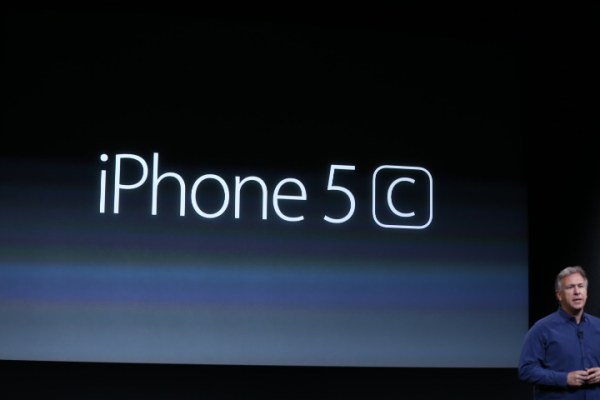Today, for the first time in its history, Apple has expanded the iPhone line with a new model called iPhone 5c. The device will come in green, yellow, blue, white and red colors.
Apple is also introducing a series of cases to go along with the phones, made of silicon rubber. The device features an A6 processor, 8MP camera and steel frame that’s coated in plastic. That frame will also act as an antenna for the radio. It gets an update on the front Facetime camera however, bumping it up to HD capability.
The iPhone 5c will run $99 for 16GB, $199 for 32GB models with 2 year contract. It also features BlueTooth 4.0 LE and dual-band Wi-Fi 802.11a/b/g/n. Apple is also touting the iPhone 5c as being compatible with more LTE bands than any other smartphone in the world, which definitely speaks to its ambitions for the global market.
[gallery ids="875811,875807,875806,875805,875802,875801,875800,875799,875798,875797,875794,875839,875836,875835,875834,875833,875832,875825,875824,875823,875822,875816,875815,875814"]
iPhone Expansion
For the entire six year history of the iPhone, Apple has staunchly stuck to offering a single line of models at a time. While it has increasingly placed both old and new models on sale alongside one another in its offerings, there hasn’t been a true new tier of iPhones ever.
Market segmentation and expanding competition from Android devices in emerging markets have been pushing Apple towards this for some time. Creating a less expensive version of the blockbuster device will allow Apple to target localities where the subsidy model simply doesn’t work.
One of those major areas is china, where Apple has a solid presence, but has been losing ground to other makers like Samsung. After many quarters of big growth, Apple’s share has slipped, allowing local Chinese brands to slot in above it in sales.
The rumored pricing of the ‘cheaper’ iPhone has hovered around the $300-$500 range un-subsidized. Previous models have ranged from $550-$800 in those areas where subsidy isn’t an option.
This strategy is a new one for Apple, which has traditionally produced only premium iPhone devices, for purchase by the largest carriers as a ‘brand ambassador‘ of sorts. The subsidy model will remain strong in many of Apple’s biggest markets, but a less expensive iPhone has the potential to expand those markets quite a bit, to the tune of 900M China Mobile subscribers, at the least.

